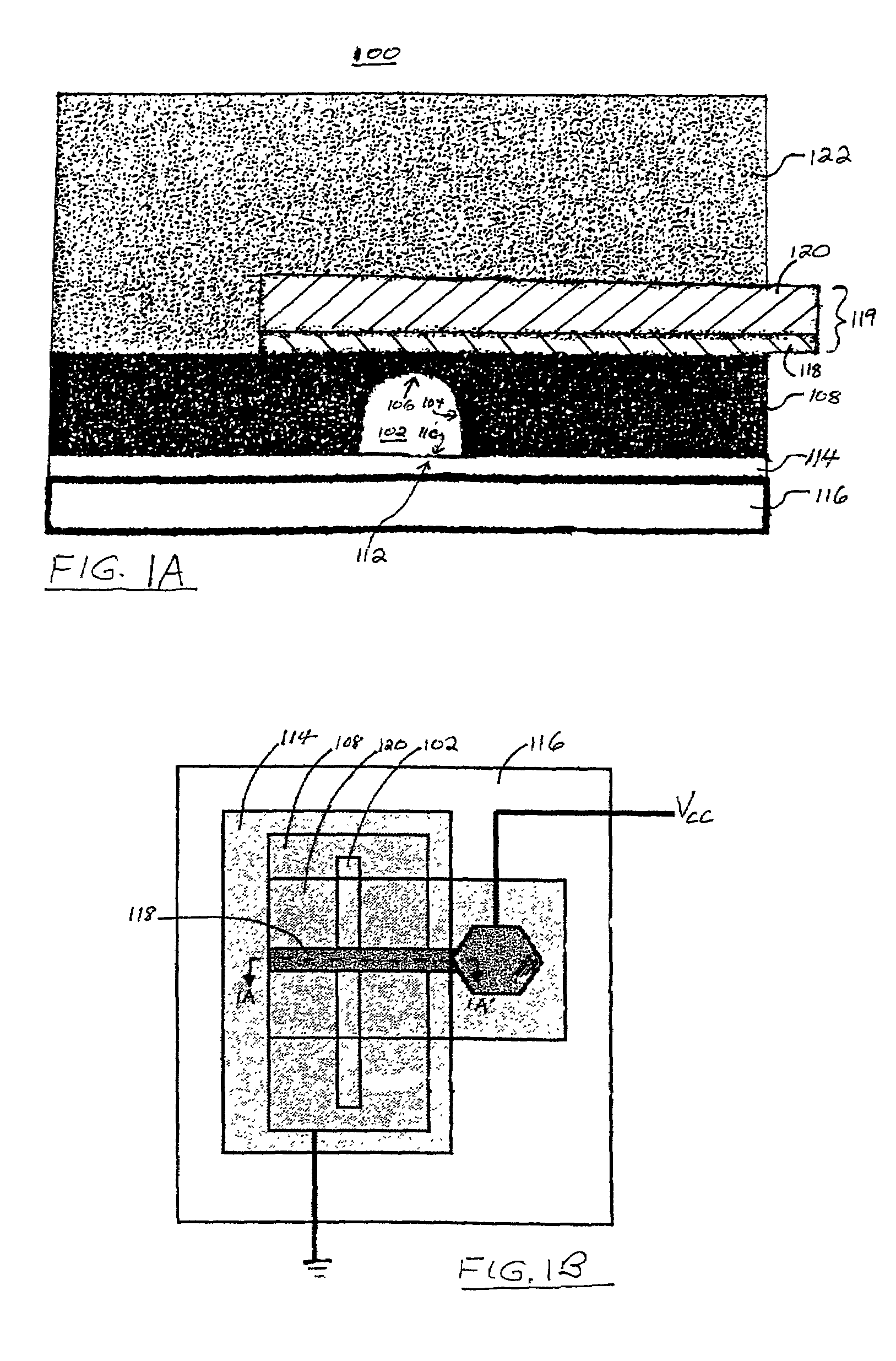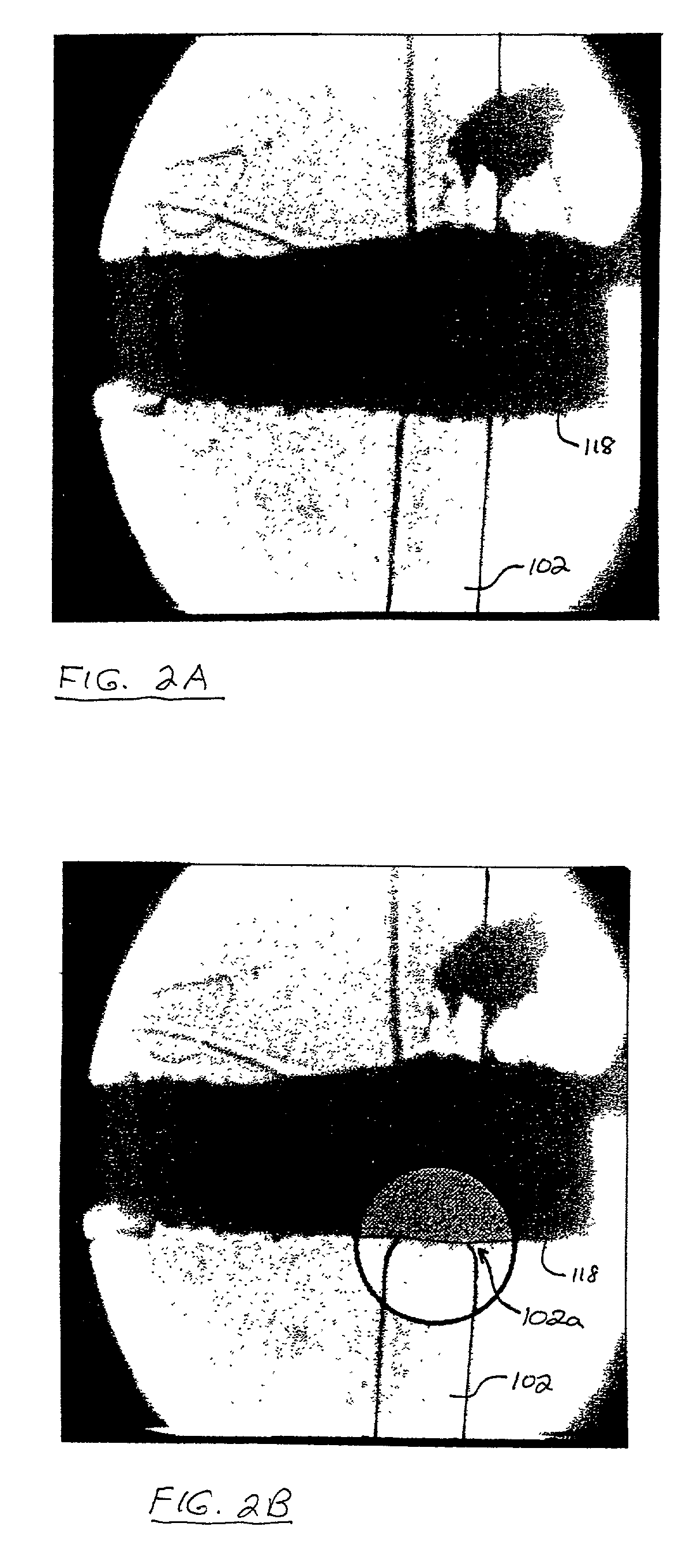Electrostatic valves for microfluidic devices
a technology of microfluidic devices and electrostatic valves, which is applied in the direction of valves, mechanical devices, engine components, etc., can solve the problems of large and complex designs, limited bulk and surface micro-machining methods, and each of these conventional approaches suffers from its own limitations
- Summary
- Abstract
- Description
- Claims
- Application Information
AI Technical Summary
Problems solved by technology
Method used
Image
Examples
first embodiment
I. First Embodiment of a Valve Structure in Accordance with the Present Invention
[0018]A. Sources of Materials
[0019]RTV 615(™) polydimethylsulfoxide (PDMS) was obtained from General Electric. Pyralux(®) LF 9110 copper / polyimide laminate was obtained from DuPont. Photoresist 5740(™) and Developer CD 20 (™) were obtained from Shipley Microelectronics. Trimethylchlorosilane (TMCS) and FeCl3 were obtained from Sigma. Hexamethyldisilazine (HMDS) was obtained from ShinEtsuMicrosi of Phoenix, Ariz.
[0020]B. Fabrication of Mold
[0021]A silicon wafer was exposed to HMDS, and then Photoresist 5740 was spun upon a silicon wafer at 2000 rpm for 60 sec. The photoresist / wafer combination was then baked at 95° C. for 60 min. The coated wafer was exposed to UV light through a mask for 2.3 min. to create exposed photoresist regions having widths varying between 30-250 μm. Development of the photoresist with 20% CD20(™) resulted in removal of unexposed photoresist. The wafer and patterned exposed photo...
second embodiment
II. Second Embodiment of a Valve Structure in Accordance with the Present Invention
[0044]While embodiments of valve structures described above in connection with FIGS. 1A-3 utilize flexible electrical control wires fabricated from copper / polyimide laminate layers overlying the flow channel, the present invention is not limited to this particular structure. Other structures and / or materials could be utilized to control the flow liquid and gaseous materials, and still remain within the scope of the present invention.
[0045]For example, in both embodiments described above in conjunction with FIGS. 1A-3, an electric field is applied across the flow channel during actuation of the valve structure. However, in an electric field ions present in the flow channel may migrate to a side of the flow channel proximate to one of the charged poles (wire or electrode). This possible migration of charged species could affect the magnitude of the electrostatic force applied to the valve.
[0046]In addit...
PUM
| Property | Measurement | Unit |
|---|---|---|
| thickness | aaaaa | aaaaa |
| width | aaaaa | aaaaa |
| width | aaaaa | aaaaa |
Abstract
Description
Claims
Application Information
 Login to View More
Login to View More - R&D
- Intellectual Property
- Life Sciences
- Materials
- Tech Scout
- Unparalleled Data Quality
- Higher Quality Content
- 60% Fewer Hallucinations
Browse by: Latest US Patents, China's latest patents, Technical Efficacy Thesaurus, Application Domain, Technology Topic, Popular Technical Reports.
© 2025 PatSnap. All rights reserved.Legal|Privacy policy|Modern Slavery Act Transparency Statement|Sitemap|About US| Contact US: help@patsnap.com



